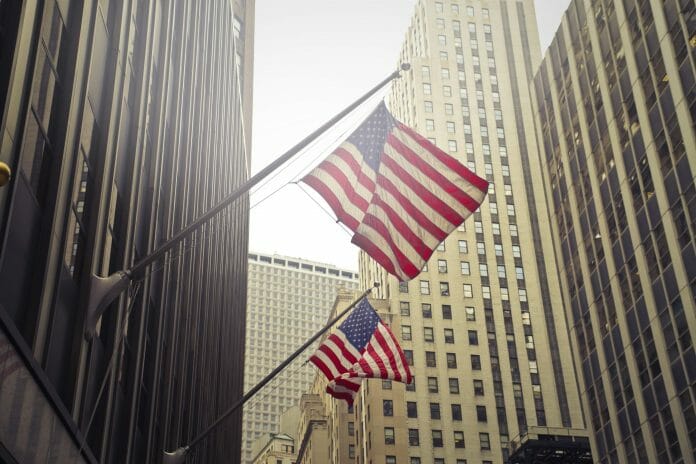Leading central banks around the world have lowered their key interest rates to extreme lows, but maybe central banks are too nervous.
By Peter Lundgreen,
In working with inflation and the understanding of this, it has long been waited for the US Federal Reserve (Fed) to announce how it will deal with inflation in the future. Naturally, one cannot change the fact that inflation is defined by the price changes for goods and services. Whether inflation is measured fully correctly can be discussed, but in any case, Fed has always been known for having fairly relaxed feelings concerning the inflation, as long as it doesn’t get out of control.
It was pretty exciting when Jerome Powell, the chairman of Fed, presented their new considerations concerning inflation at the Jackson Hole symposium about 2 weeks ago (virtual event this year). For a number of years, many have been puzzled how unemployment in the United States could stay at historic lows without leading to wage inflation that would spread as price inflation further out in the American economy. It was also expected that the Fed would address changes in the central bank’s way of dealing with inflation.
If I should briefly summarise how I understand what Jerome Powell from the Fed presented, it is that the central bank will take an even more relaxed stand towards inflation in the future. The central bank keeps the view that a natural level for inflation is two pct., but Fed is not worried if the inflation moves higher for a period, especially if inflation has been below 2 pct. prior to the rise.
The central bank only intends to intervene if they assess that inflation is fundamentally rising to an exceedingly high level. With the current outlook for the US economy during and after the Covid-19 crisis, most participants in the financial market would probably interpret these statements, as the Fed keeps interest rates at zero pct. for a very long time ahead, that’s also how I perceive Powell’s statements.
The big question about how the United States could have such a hot labour market for years before the Covid-19 crisis, without generating inflation, was not directly resolved at the conference. However, in their reassessment of the inflation, it seems that Fed has concluded that this is simply how the world currently is, though they will after all amend their decision and forecast model. The Fed will continue to work with an expected maximum demand pressure for labour for the total labour market.
However, the methodology used to predict when the demand for labour translates into wage inflation has been adjusted. Specifically, this means that the demand for labour can now move closer to the expected demand maximum before the Fed forecasts that it has an impact on inflation, which again influences the decision on a possible future rate hike.
I believe that the changed attitude towards wage inflation contains a recognition that companies in the United States, since the global financial crisis, have achieved a better opportunity to utilise the labour force more efficiently. It has become more common to work from home, so that available employees can be accessed from a long distance and simply work in the company virtually, which naturally increased significantly during the Covid-19 crisis.
The fact that an increasing number of participants in the labour market now work as freelancers instead of being permanent employees results in higher flexibility for the companies. It increases the cost efficiency once more and the introduction of administrative robots supports this trend, and in addition, robots generate a price competition towards freelancers. Here too, the conclusion is that based on the development in the labour market, it will take a long time before the Fed raises interest rates.
However, in general, I disagree with the fear of the so-called Japanese inflationary conditions with perpetually low inflation. When the global financial crisis hit the world, inflation naturally plunged when the crisis hit. But during the past decade, there has been a certain level of inflation, which may not have moved and was completely stable around the desired 2 pct., except in 2015, when the oil and energy prices plummeted.
For the US and the Eurozone, this is even more outspoken when looking at the core inflation (excluding food and energy prices)- which is why I have argued, since years, that the central bank interest rates should have been higher from long ago. It is only recently, in the shadow of the Covid-19 crisis, that core inflation has dropped again, and I must admit, I look at the figures for August and September when they come.
It is my view that central banks have long been too pessimistic in assessing the resilience of the global economy, and I even expect that this resilience will help the world economy move forward again after the Covid-19 crisis. But the resilience is not strong enough to make global GDP growth kickstart again, with the consequence that the economic rebound in several countries will be lower than what the stock market currently is dreaming about. The basic economic robustness, nor central bank actions, can compensate for the costs in the private sector that are linked to Covid-19 related lockdowns, though this challenge is another story and must be handled separately.
Peter Lundgreen is the Founding CEO of Lundgreen’s Capital. He is a professional investment advisor with over 30 years of experience and a power entrepreneur in investment & finance. Peter is an international columnist and speaker on topics about the global financial markets.









